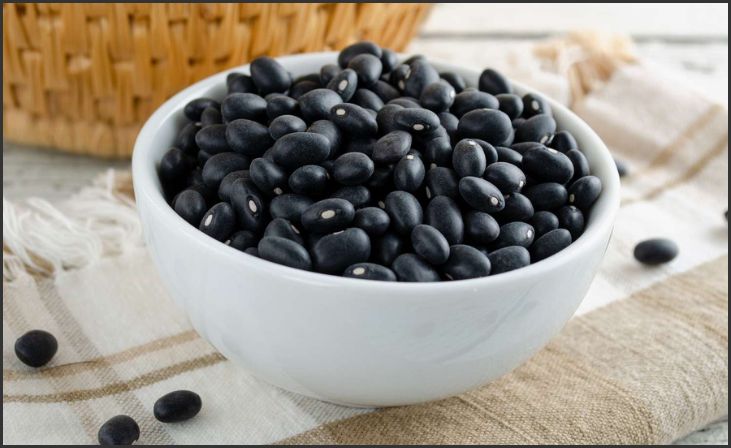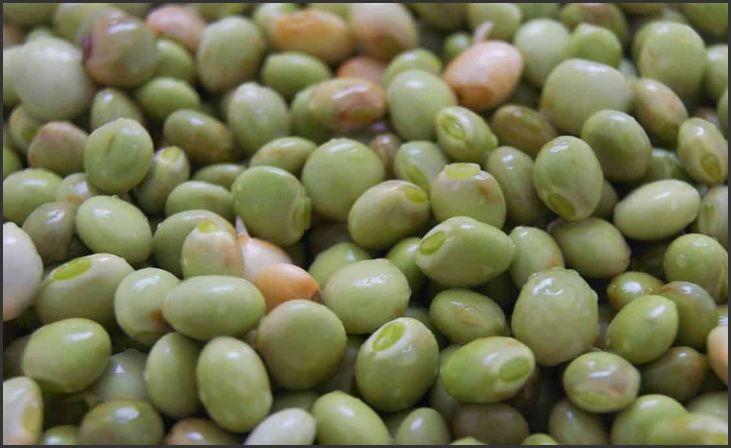Kidney beans, named for their distinct kidney-shaped appearance, are widely used in various dishes such as sauces, salads, and garnish. These red beans are highly nutritious and offer a good source of protein.
But what if you don’t have access to kidney beans?
If you’re in need of a substitute for kidney beans, whether due to a dislike of the legume or a lack of availability at the grocery store, these options can easily be used in all your favorite dishes.
No matter what your specific needs are, you’ll be sure to find a suitable replacement on this list.
What are Kidney Beans?
Kidney beans are a type of legume that is popular in many cuisines around the world. They are known for their rich, earthy flavor and firm yet tender texture, making them versatile ingredients in various dishes such as chili, soups, stews, and salads.
Kidney beans are recognizable by their elongated, kidney-shaped appearance and come in several varieties, including regular, dark red, and white. They have a sweet, nutty flavor and contain nutrients such as soluble dietary fiber, vitamins, and minerals.
These beans are commonly used in soups, baked beans, and chili con carne and make a great vegetarian substitute for meat in tacos, salads, and burgers. However, if you cannot find kidney beans or don’t care for their flavor, you can try several easy replacements. Read on to learn more.
Substitute for Kidney Beans
Some good substitutes for kidney beans include black beans, pinto beans, red beans, white beans, borlotti beans, and Anasazi beans. These legumes have similar flavors and textures to kidney beans and can be used in many of the same dishes.
Additionally, non-legume options like chickpeas and lentils can also be used as substitutes for kidney beans, although they may have a slightly different taste and texture.
When choosing a substitute, it’s important to consider how it will affect the overall flavor and texture of the dish.
Also Read:- Graduation Desserts Worth Celebrating
Black Beans

Black beans, a small kidney-shaped legume with a rich, full flavor, are commonly used in Latin American cuisines, particularly in southern Mexico and South America.
They lend a touch of Latin flavor to dishes and are high in fiber and protein, making them a nutritious substitute for other beans. Black beans are suitable for use in soups and casseroles and go particularly well in dishes with bold flavors.
Black beans have an earthy flavor and a texture similar to kidney beans and can be used as a substitute in tacos, bean dips, soups, chilis, and burgers. They may not look the same, but they work well as a 1-to-1 substitute for kidney beans in many recipes.
Pinto Beans
Pinto beans make an excellent substitute for kidney beans in chili con carne recipes. They are a good source of protein, fiber, and essential vitamins and minerals, ensuring that you serve your family a nutritious meal.
These beans have a buttery, creamy texture and light brown color and are a popular choice for making refried beans and taco soup. In addition, pinto beans are often used in dishes such as burritos and soup because they provide a filling and satisfying texture.
They have a creamy, nutty, and slightly earthy flavor that many people enjoy. They can be used in a 1-to-1 ratio as a substitute. Give pinto beans a try and see how they can add a unique flavor to your dishes.
Red Beans
Red beans are an excellent substitute for kidney beans. They have a similar protein content and nutrient profile and can be used in dishes such as chilies, stews, soups, and salads.
Their similar color and texture make them a good choice for soups, salads, stews, chilis, and baked beans. Use red beans in a 1-to-1 ratio as a substitute for kidney beans and see how they can enhance the flavor and nutrition of your dishes.
Cannellini Beans (White Beans)
Cannellini beans, also known as white beans, are a good substitute for kidney beans. Originally from Italy, these white beans have the same size and shape as red kidney beans.
They have a subtle, nutty flavor and can be used as a substitute for red kidney beans in salads, soups, and pasta dishes and can be used in a 1-to-1 ratio as a substitute.
In addition to their pleasant taste, cannellini beans are highly nutritious and can contribute to overall health when consumed regularly. So give cannellini beans a try and see how they can add a unique flavor to your dishes.
Navy Beans
Navy beans, also known as pea beans, were once a staple food in the US Navy. These white beans can lower cholesterol and have a texture and flavor similar to kidney beans.
They make a good substitute for kidney beans in soups and stews and can be used in a 1-to-1 ratio as a replacement. So give navy beans a try in your favorite recipes and see how they can enhance the flavor and nutrition of your dishes.
Borlotti Beans
Borlotti beans, also known as cranberry beans, are visually striking with their white and pink striped appearance. They have a slightly sweet flavor similar to kidney beans and make a good substitute in bean salads and soups.
Borlotti beans have a thin skin and produce a rich broth when cooked. Use borlotti beans as a 1-to-1 substitute in your recipes and see how they can add flavor and nutrition to your dishes.
Anasazi Beans
Anasazi beans are a variety of heirloom legumes with a dark red and white color pattern. They are popular in Latin and Mexican cuisine and have an earthy, sweet, and nutty flavor similar to kidney beans.
Anasazi beans can be used as a substitute for kidney beans in recipes like hot chilies, lime, and cilantro. Anasazi beans also have a meat-like texture and can be used as a replacement for kidney beans in a 1-to-1 ratio in any recipe. So give Anasazi beans a try and see how they can add unique flavor and nutrition to your dishes.
Garbanzo Beans
Garbanzo beans, also known as chickpeas, are a vegan staple that is high in protein. They have a mild flavor and a creamy, slightly gritty texture, similar to cooked potatoes. While they may not have the same texture or appearance as kidney beans, they can be used as a substitute in similar dishes.
Chickpeas can be used as a 1-to-1 replacement for kidney beans in soups, stews, chilis, and even baked bean recipes like calico baked beans. So give chickpeas a try and see how they can add unique flavor and nutrition to your dishes.
Pink Beans
Pink beans, also known as Santa Maria pinquitos, have a rich, meaty flavor and slightly powdery texture. They get their name from their light color, which is similar to pinto beans.
Pink beans make a good substitute for kidney beans in recipes like baked beans, chili, soups, and stews. They can be used in a 1-to-1 ratio as a replacement. Give pink beans a try and see how they can add flavor and nutrition to your dishes.
Mung Beans
Mung beans are light to medium green-colored legumes commonly used in Asian cuisines. They are a good source of antioxidants and can be added to dishes such as curries, salads, soups, and stews.
While mung beans may not have a similar shape, color, or taste to kidney beans, they can be used as a replacement for those who do not like the flavor of kidney beans due to their nutty and slightly sweet flavor.
They work well in both savory and sweet recipes. In addition, mung beans contain B vitamins that help prevent infections and increase the production of red blood cells. Use mung beans in a 1-to-1 ratio as a substitute in the dishes listed above and see how they can add unique flavor and nutrition to your meals.
Pigeon Beans

Pigeon beans, also known as pigeon peas, can be found in tropical and subtropical regions of Asia. They are oval-shaped, change color as they mature, and have a bright green to a beige color similar to mung beans.
Many people enjoy the nutty and slightly sweet taste of pigeon beans, which can be served with rice or used in various dishes. In addition, pigeon peas are a good source of folate and can be used as a substitute for kidney beans in a 1-to-1 ratio for those who do not like the flavor of kidney beans.
Lentils
Lentils are a type of legume that come in a variety of colors. While they may not be the best substitute for kidney beans in terms of texture, size, or color, they are similarly nutrient-rich. Lentils are a good source of potassium and may help with constipation and blood sugar control.
Adding olive oil can enhance their flavor, and lentils also provide soluble fiber, which is good for digestion and preventing constipation. They are often used in soups, curries, salads, and pasta dishes. So if you’re looking for a nutritious alternative to kidney beans, give lentils a try and see how they can enhance the flavor and nutrition of your recipes.
What can I use instead of kidney beans in chili?
Black beans are a great substitute if you don’t have kidney beans on hand or want to try a different bean in your chili recipe. They have a similar texture and flavor to kidney beans, making them a good choice for replacing them in chili.
Other beans that can be used as substitutes for kidney beans in chili include pinto beans, white beans, and cannellini beans.
Do chickpeas taste like kidney beans?
Chickpeas, also known as garbanzo beans, have a slightly nutty and slightly sweet flavor that is distinct from the flavor of kidney beans. Chickpeas are a popular ingredient in many vegetarian and vegan dishes, and they are often used to add protein, fiber, and other nutrients to dishes like salads, soups, and stews.
While chickpeas and kidney beans are both members of the legume family and have some similarities in terms of their nutritional content, they have their own distinct flavors and textures, and they are not generally considered to be interchangeable in recipes.
Are canned kidney beans healthy?
Kidney beans are a healthy food that can be a good source of protein, fiber, and several important vitamins and minerals. Canned kidney beans can be a convenient and easy way to incorporate kidney beans into your diet.
Overall, canned kidney beans can be a healthy and convenient option if they are properly stored and prepared. However, it’s also important to remember that, like all foods, kidney beans should be consumed in moderation as part of a balanced diet.
Why should you not boil canned beans?
There are a few reasons why you might not want to boil canned beans:
- Canned beans are already cooked, so boiling them can cause them to become mushy or fall apart.
- Boiling canned beans can also cause them to lose some of their flavors.
- Canned beans are often packed in a liquid that contains added salt and other ingredients. If you boil the beans, you might also be boiling off some of these flavors, which can affect the overall taste of your dish.
For these reasons, it is generally recommended to drain and rinse canned beans before using them in a recipe rather than boiling them.
Can you use beans straight from the can?
Yes, you can use beans straight from the can in most recipes. However, it is generally recommended to drain and rinse the beans first to remove any excess salt or additives that might be present in the canning liquid.
Rinsing the beans can also help to remove any excess starch or foam that might have formed during the canning process. Once the beans have been drained and rinsed, you can use them in various recipes such as soups, stews, salads, and casseroles. You can also mash or puree them to make dips or spreads.
Keep in mind that beans that come from the can are already cooked, so you may not need to cook them for as long as you would if you were using dried beans. Be sure to follow the specific recipe instructions for cooking times and temperatures.
Also Read: Herbs For Lamb
What is the difference between white beans and navy beans?

White beans and navy beans are both small, white legumes that are commonly used in a variety of dishes. They are similar in appearance, flavor, and texture, and can often be used interchangeably in recipes.
One key difference between white beans and navy beans is the size. White beans are generally slightly larger than navy beans, and they tend to have a more oblong shape. Navy beans, on the other hand, are smaller and more rounded.
Another difference between white beans and navy beans is the texture. White beans tend to have a creamier and slightly softer texture when cooked, while navy beans tend to have a firmer and slightly more mealy texture.
In terms of flavor, white beans and navy beans are similar, with a mild, nutty taste. Both types of beans are highly nutritious and are a good source of protein, fiber, and essential nutrients.
Overall, the main difference between white beans and navy beans is the size and texture, and either can be used as a substitute for the other in most recipes.
Conclusion
The world of cooking is vast, and our exploration of kidney bean substitutes opens up a realm of delectable options. Whether you’re adapting recipes for dietary preferences or simply seeking new flavors, these alternatives provide a delightful twist to your culinary creations. Embrace the diversity of substitutes like black beans, quinoa, and more, and let your kitchen become a canvas for innovative and mouthwatering dishes. Elevate your cooking experience with these 12 fantastic kidney bean substitutes—your taste buds will thank you!
FAQs
Black beans or pinto beans are excellent alternatives, offering a similar texture and taste that complements chili recipes perfectly.
Yes, quinoa and lentils are gluten-free options that make fantastic substitutes for kidney beans in a variety of dishes, ensuring inclusivity for those with dietary restrictions.

Leave a Reply